3D Printed Labyrinth Maze
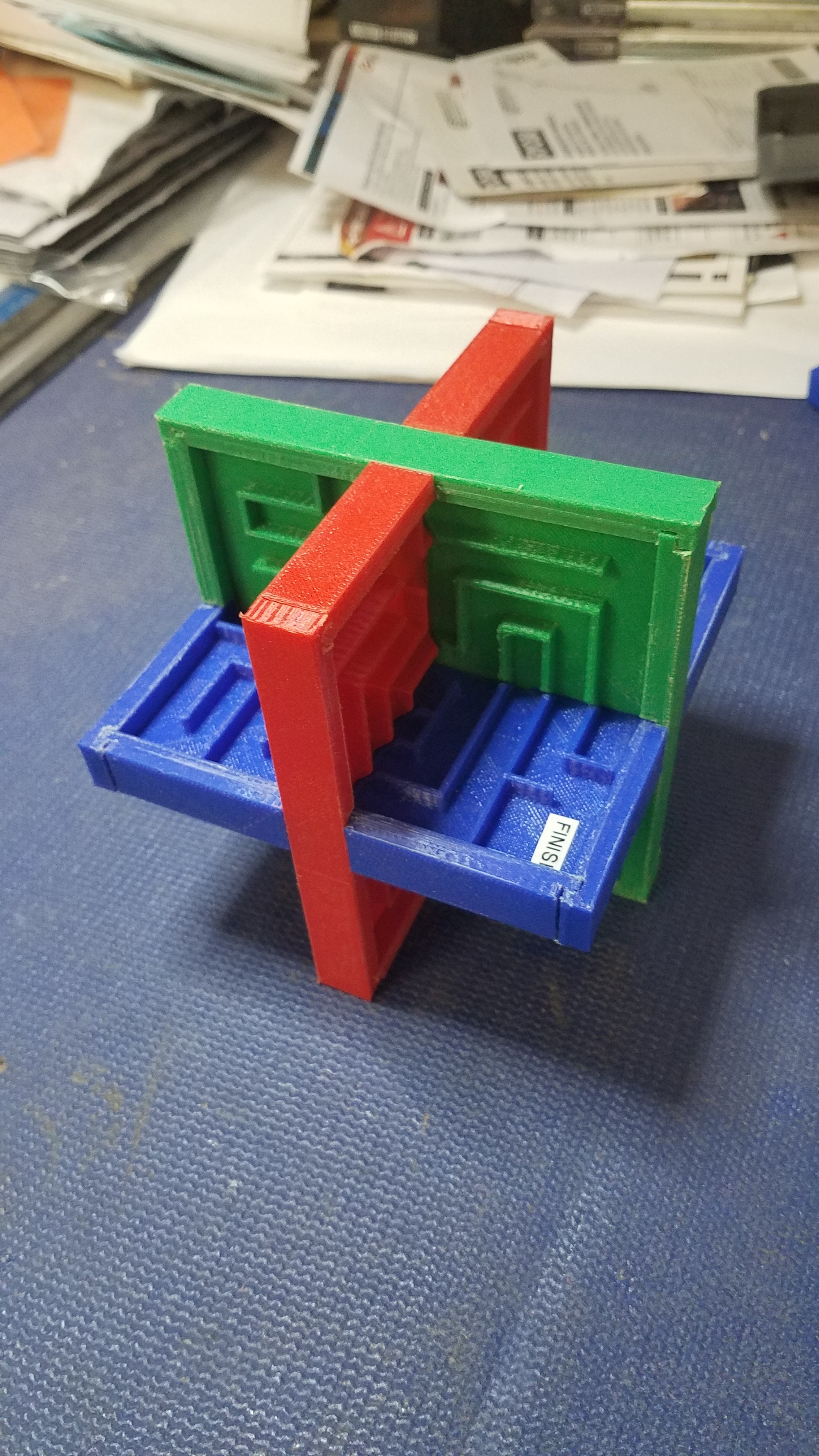
Hello everyone, my name is Rick McLeod and I am a retired engineer who dabbles in woodworking, electronics and 3D printing. This instructable was inspired by the work of Asray Gopa who designed and built a 3D Labyrinth Maze using cardboard. See his instructable here:
When I saw his instructable my first thought was to make this maze using a 3D printer. It took me a while to figure out how to design the maze for 3D printing without having to use support structures. And once that design was done it took several tries to get the design tweaked so that the pieces would slide together properly. The size of my maze is slightly different from Asray's, being a cube roughly 4 3/4" on each side. The finished product is shown in the photo.
I printed out the pieces using three filament colors - Red, Blue and Green. There's no reason that you cannot make this maze using just one color filament though. Later on in the steps I will outline which pieces to make in which colors should you want the border pieces to match the maze pieces as shown in the photo.
Supplies
For this project you will need the following:
- The set of .stl files - there are 8 maze pieces and 4 border pieces
- 3D printer
- 3D printing filament - I used PLA, but any filament type should work
Download the .stl Files
Download all the .stl files attached here.
Note that the actual file names include a "40pct" and a "V" with a number. My original version of this maze was much bigger, so when it came time to actually print the pieces, I made each piece 40% of the original size. And the "V" number is the version number of the piece. As you can see, it took a number of tries to get the dimensions so that the pieces would fit together.
Disclaimer: While in theory you should be able to scale this project up or down, I only made the 40% sized pieces. Your mileage may vary depending on the scaling factor that you choose.
The names of the files (in shorthand) are:
- Maze pieces
- Blue 1
- Blue 2
- Blue 3
- Blue 4
- Green 1
- Green 2
- Red 1
- Red 2
Print one of each of the maze pieces. My naming convention for the maze pieces include the color of filament I used and a number. For all these pieces there is a flat bottom, so that is the side that should be positioned on the printing platform of your 3D printer.
- Border pieces
- Border 1 - a "slot" piece - print 4 pieces
- Border 2 - a "tab" piece - print 2 pieces
- Border 3 - a "tab" piece - print 4 pieces
- Border 4 - a "slot" piece - print 2 pieces
The list above shows the total number of border pieces required. However, should you choose to make the maze in three colors - as I did - you will want to make the border pieces in the colors according to this list:
- Border 1 - print 2 pieces in Green and 2 pieces in Red
- Border 2 - print 2 pieces in Green
- Border 3 - print 2 pieces in Red and 2 pieces in Blue
- Border 4 - print 2 pieces in Blue
When orienting the border pieces for printing, Borders 1 & 2 both have flat sides, so those should be positioned on the printing platform. For Borders 3 & 4, since they have "slots" on both surfaces, it is best to orient them so that the smaller slots face the printing platform. A 3D printer will not span the gap of the larger slot, but it will span the gap of the smaller slots.
Post-printing Adjustments
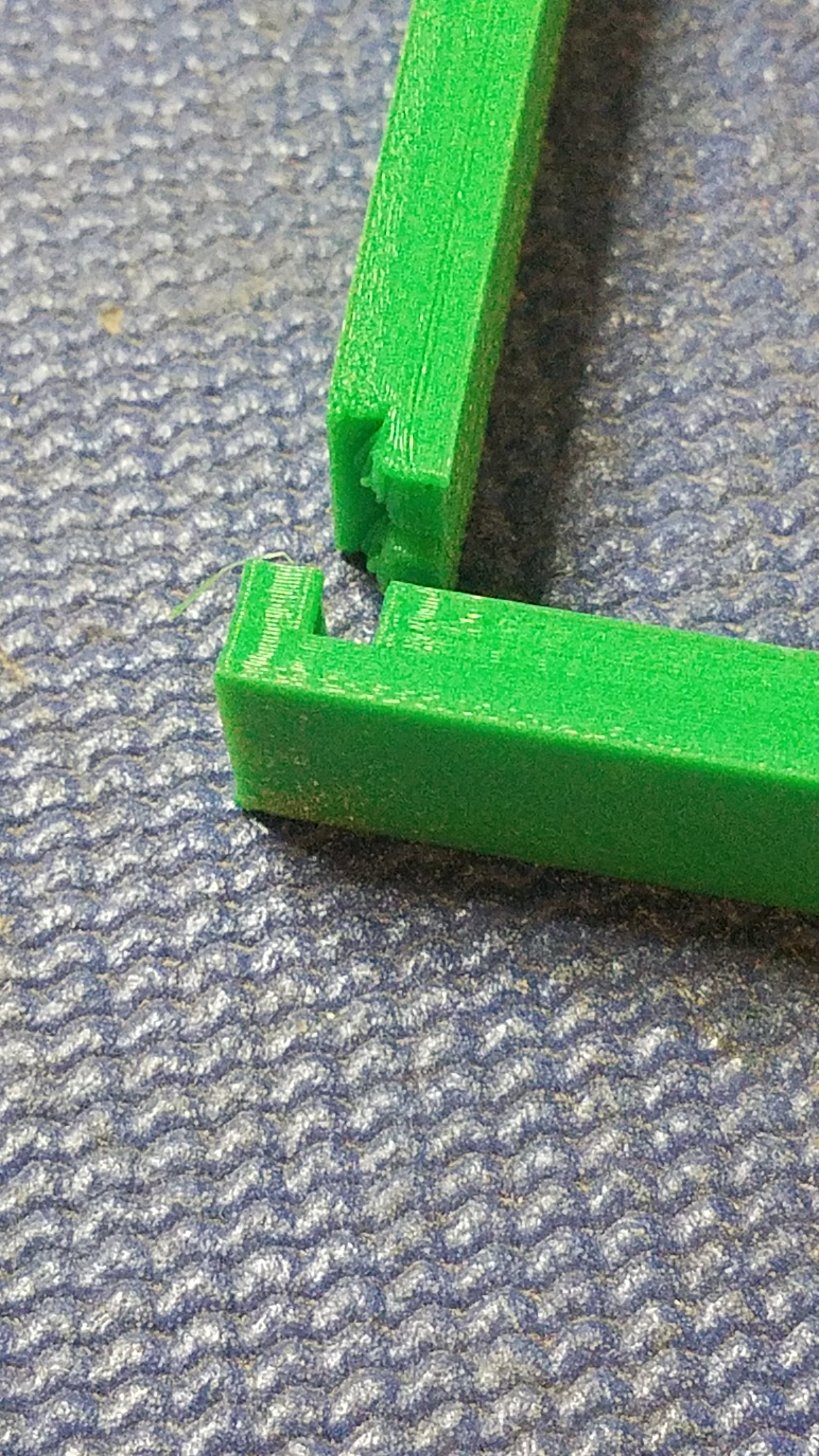
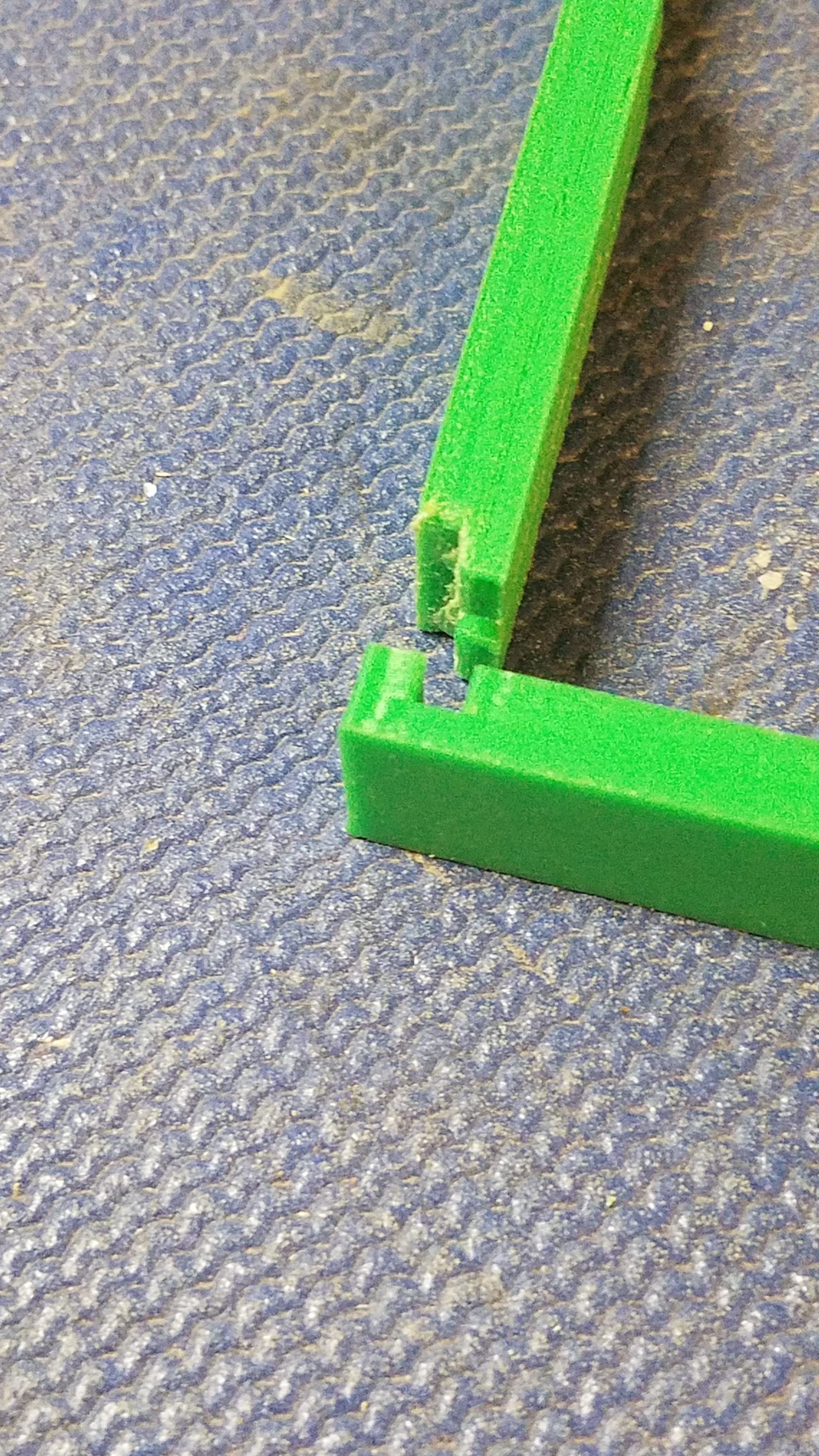
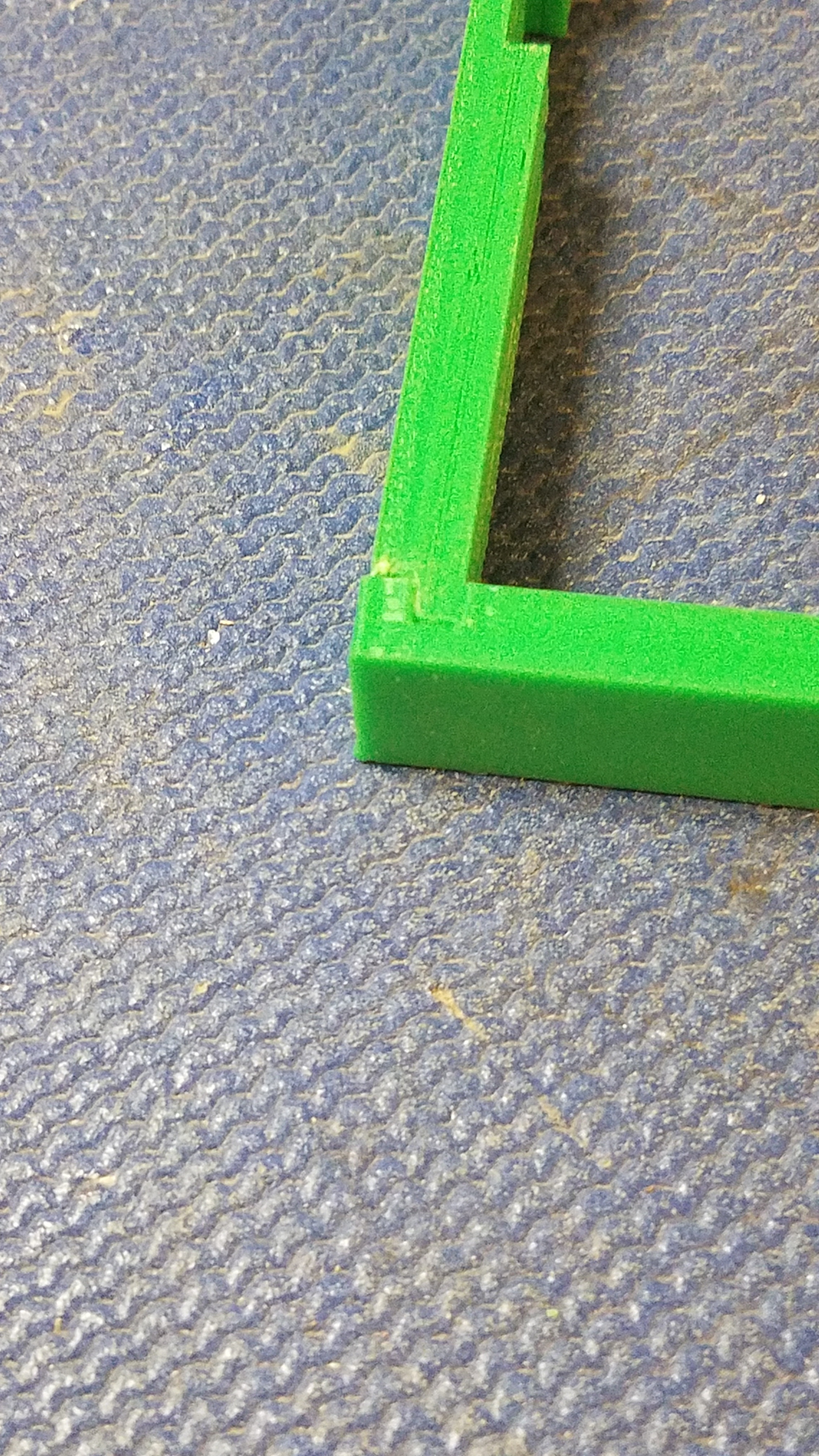
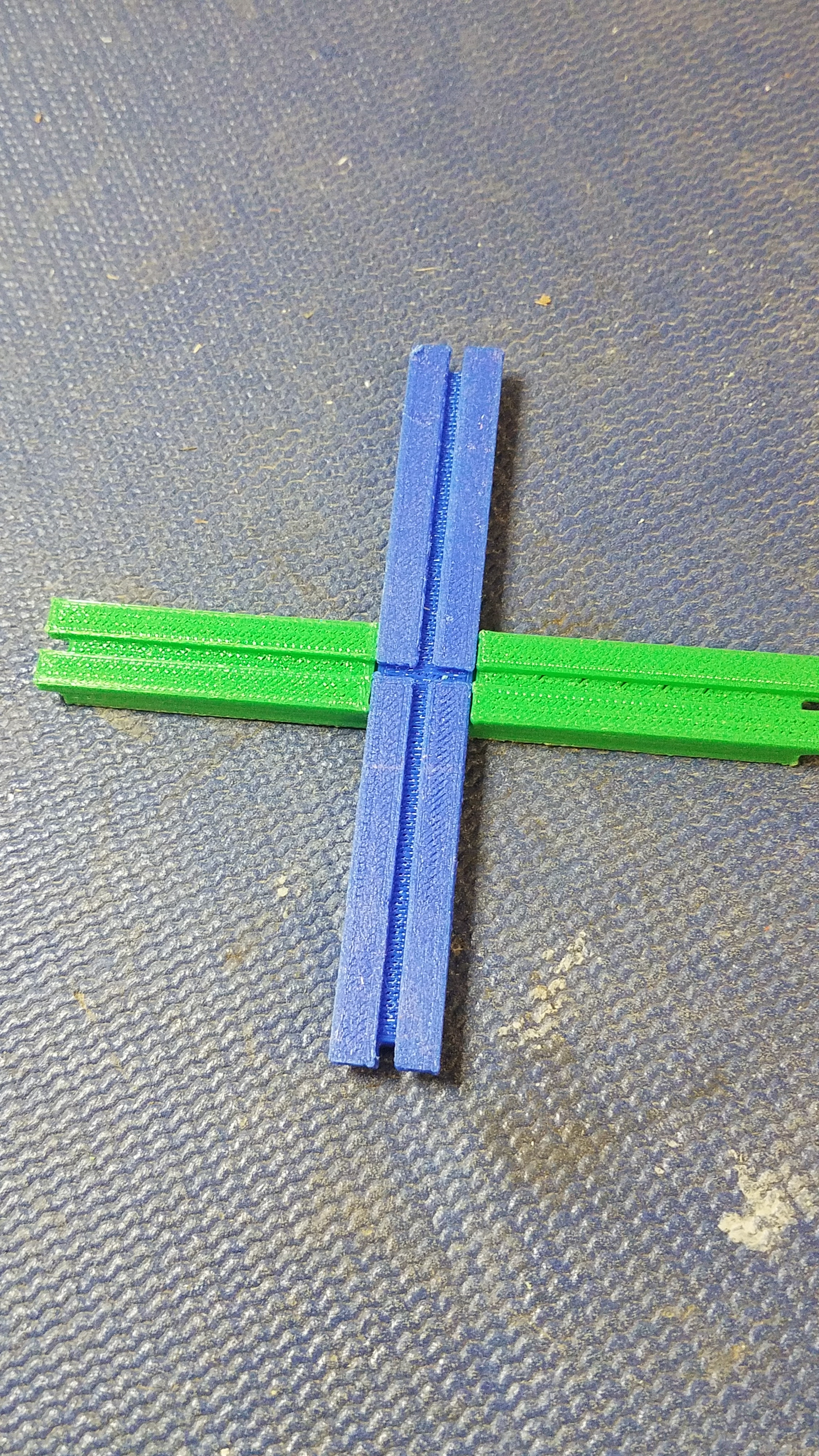
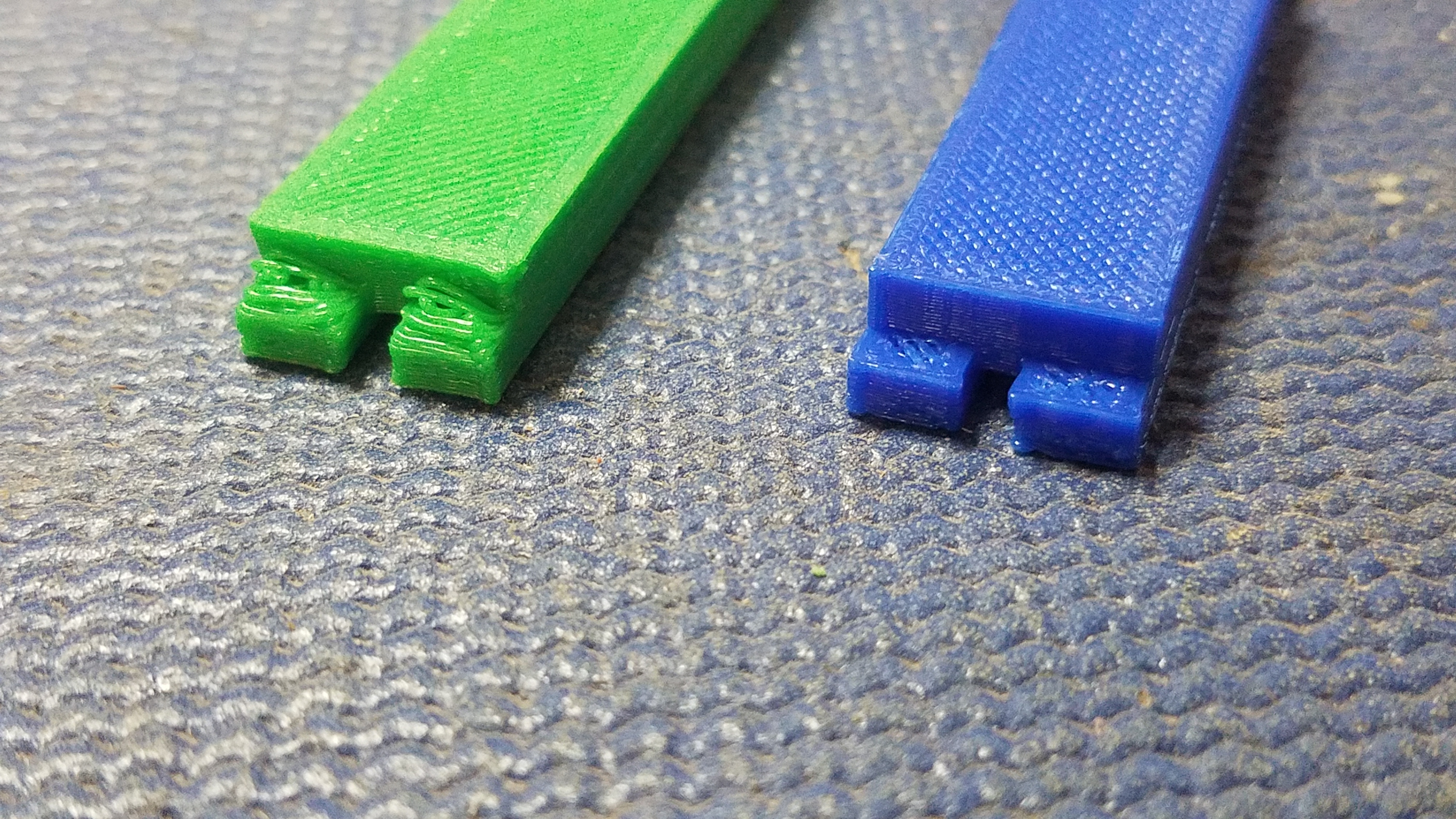
While the maze pieces should not require any touch up to fit together, the border pieces are another story.
The border pieces are supposed to capture the edges of the maze pieces and slip together in a sort of "tab and slot" fashion. But since the Border 1 piece is printed with the flat side down, the 3D printer has a difficult time printing the tab at each end. This is because the tab is above the printer's surface so effectively the printer is printing in mid air without a support. So the answer to this issue is to take a file and file down the tab so that it fits into the slot in the corresponding border piece.
The photos show a close up of a "good tab" and a "bad tab". Also shown are pictures of a bad tab and its corresponding slot piece before and after filing and what the joint should look like when properly fitted.
Where the border pieces cross is also a spot to look for poor fit. The fit should look like that shown in the picture, but sometimes the first layer causes the pieces not to fit flat, so some filing may be required.
It's best to test fit all the border pieces before trying to assemble the whole maze, so it is worth the time now to get all the pieces to fit correctly.
Assemble the Maze Pieces
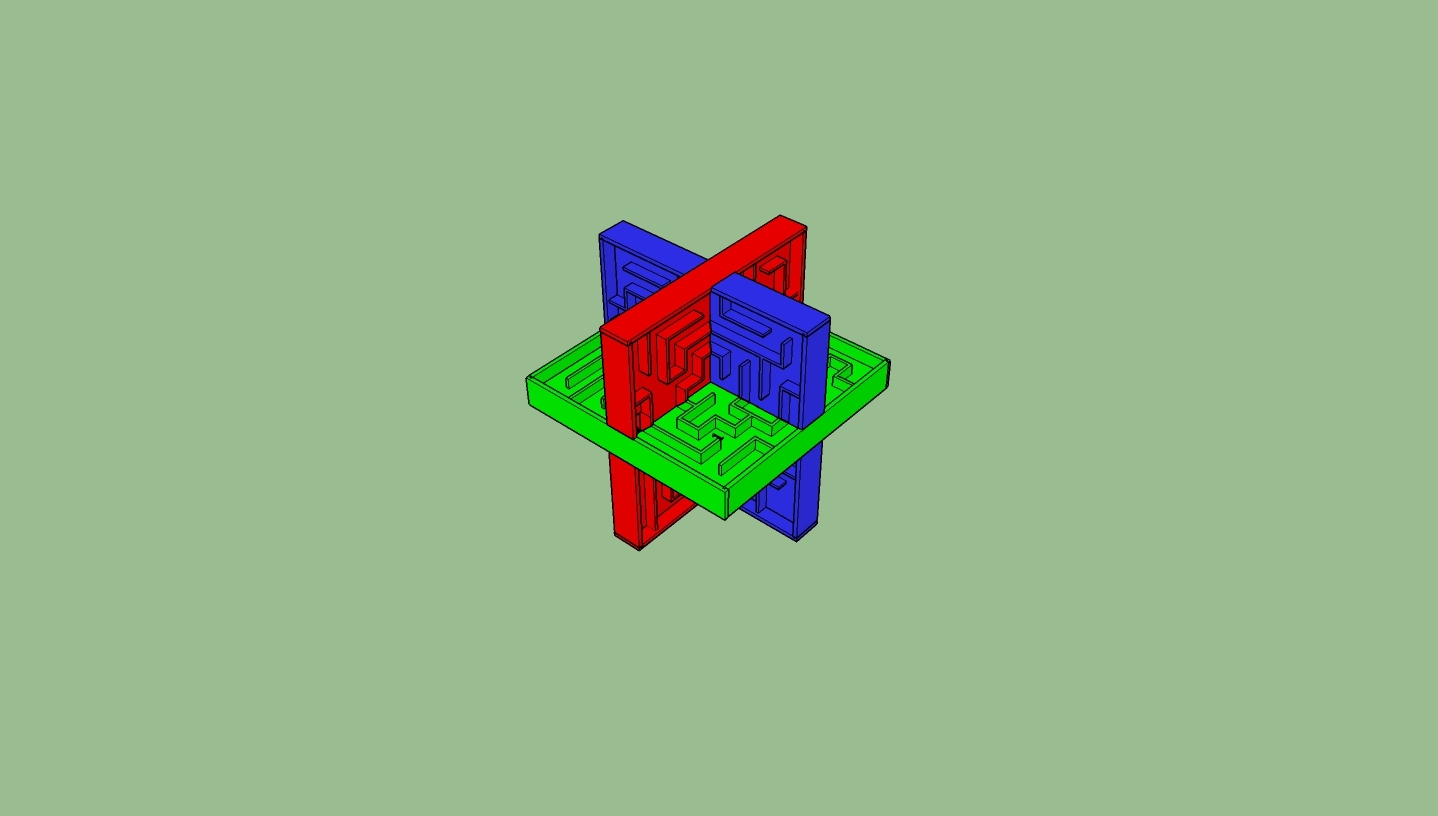
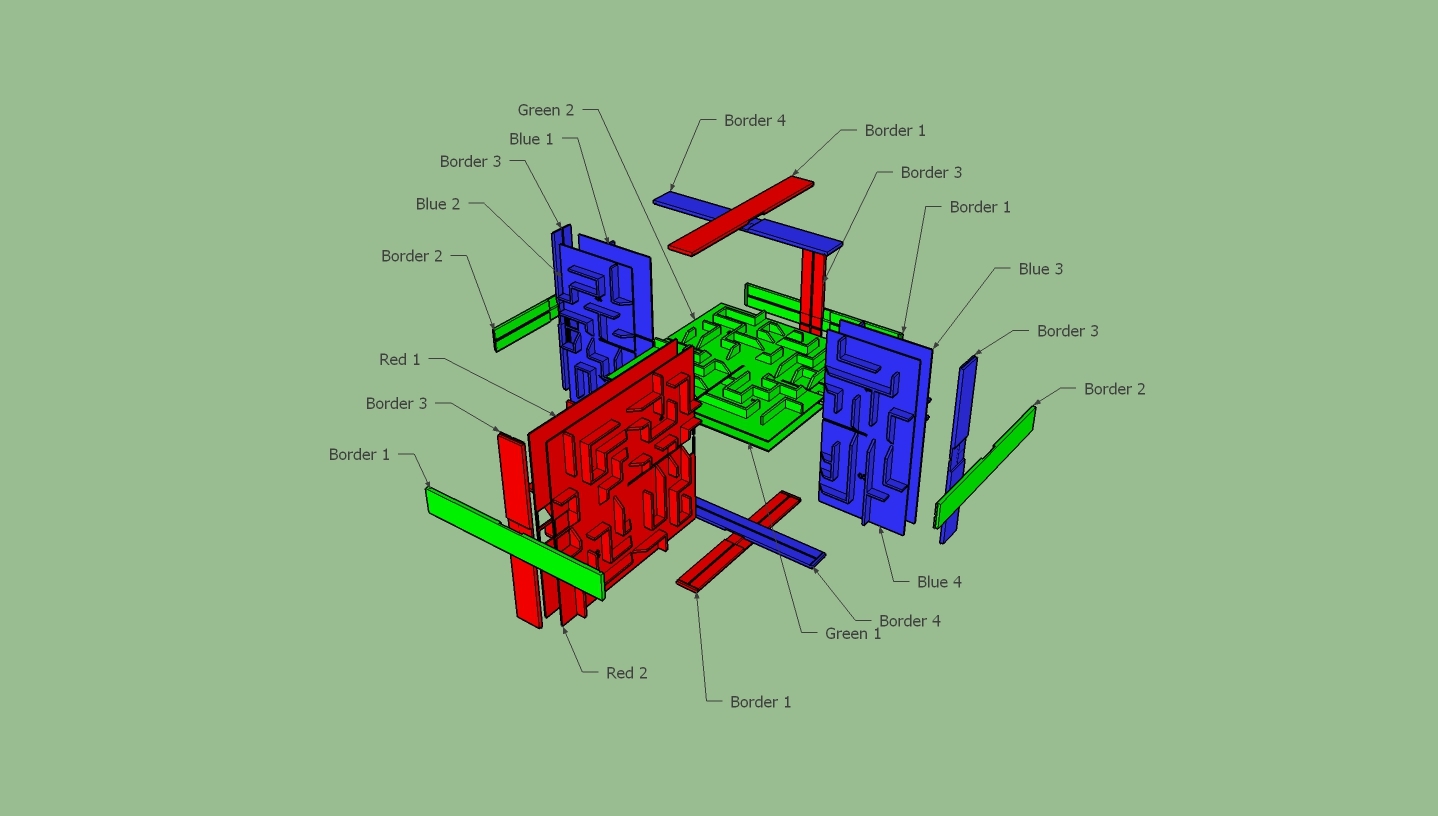
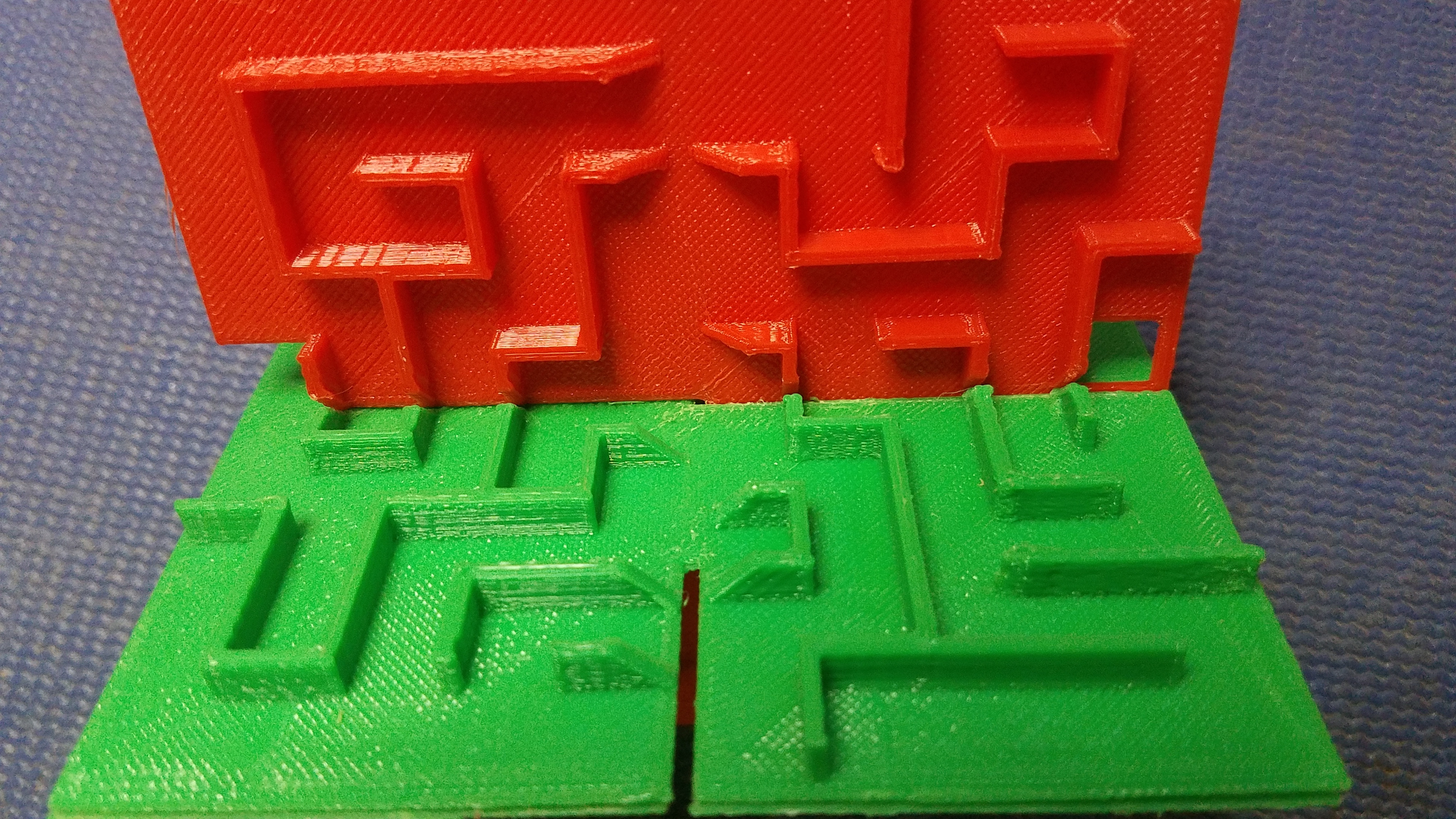
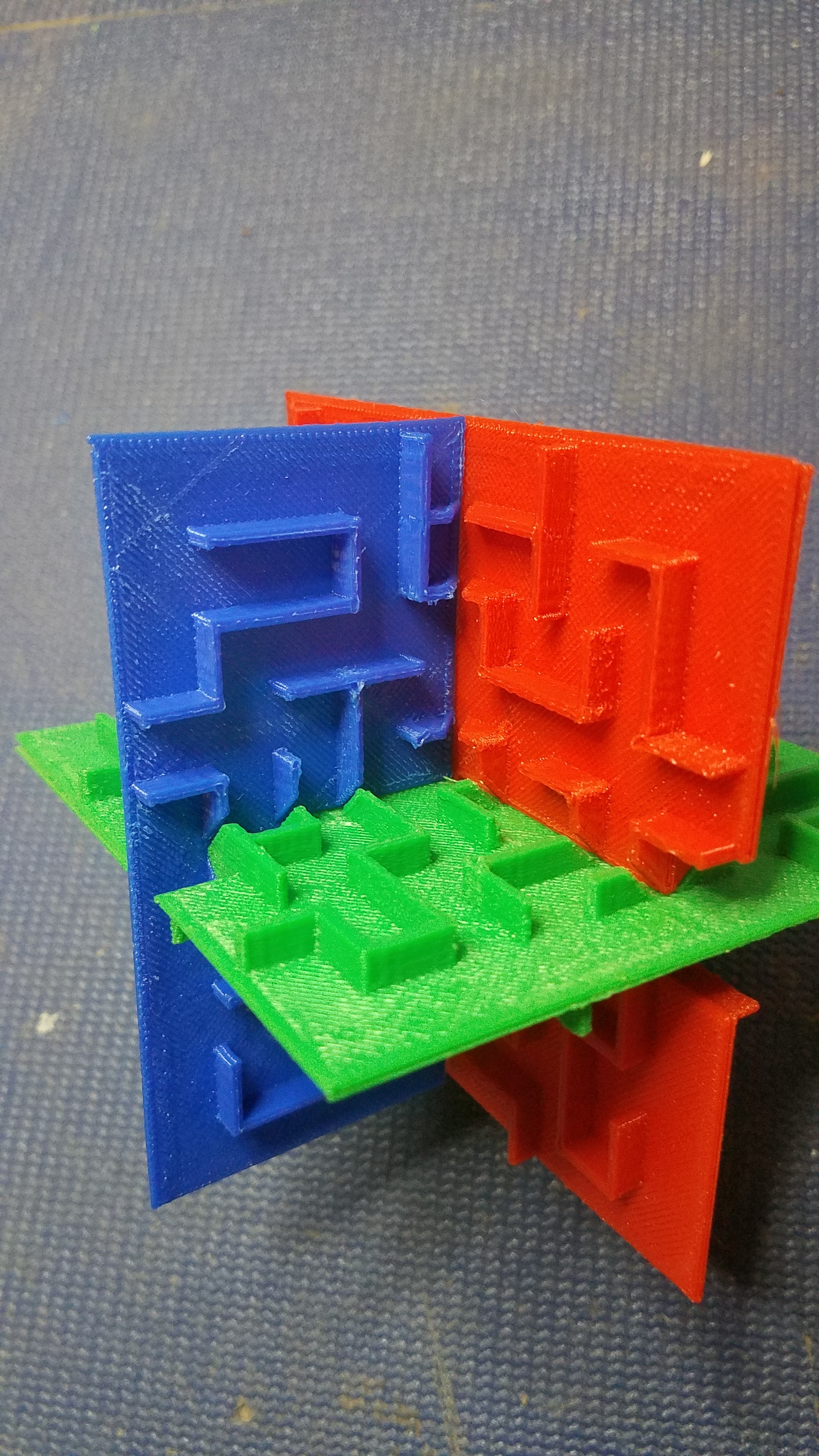
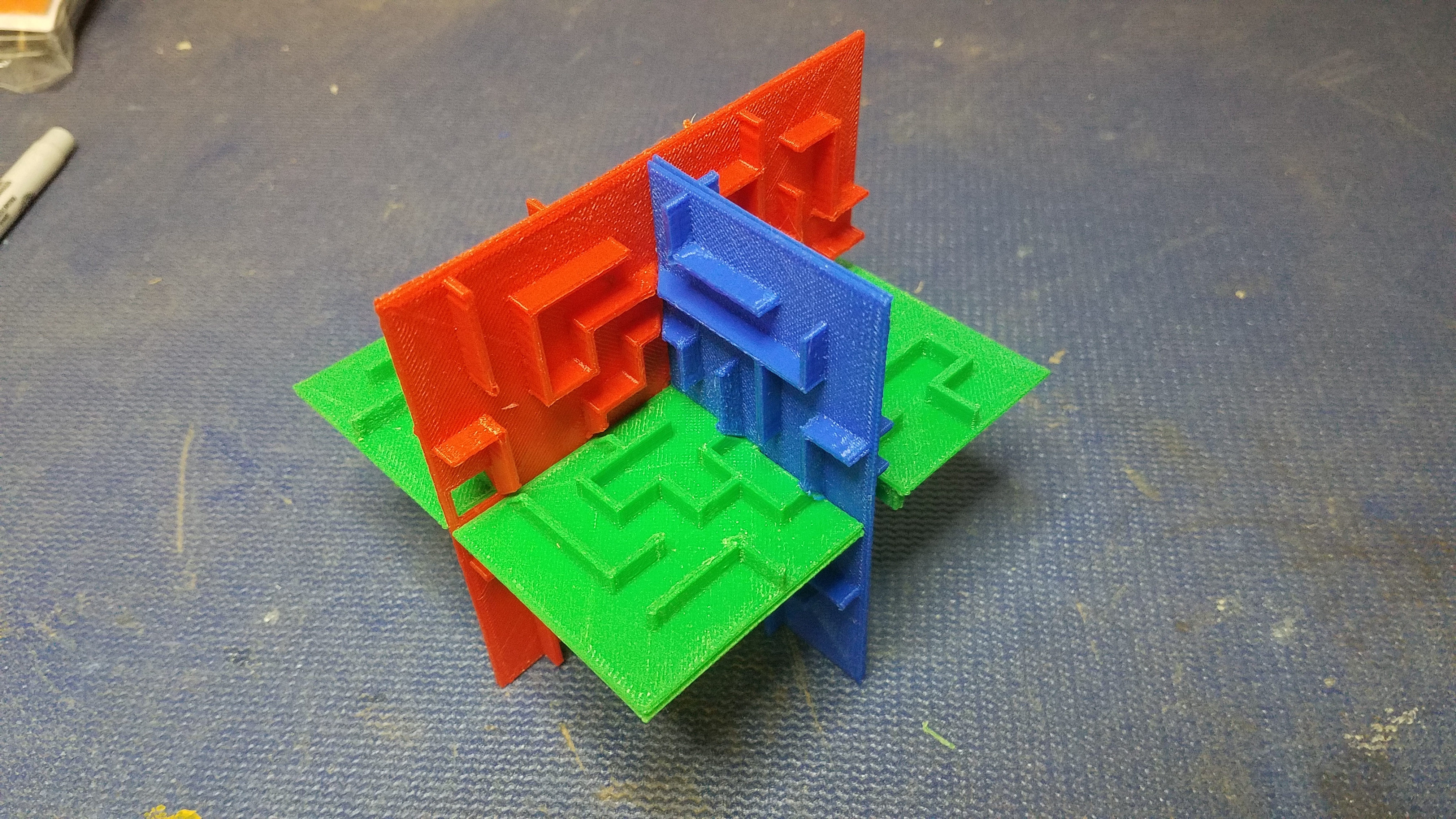


With all the pieces printed and the border pieces fit properly checked it is time to assemble the maze pieces. There are two images here that show the assembled maze (including the border pieces) and an image showing an exploded view of all of the pieces. Hopefully this will give you a good idea on how this goes together.
There is a proper sequence to this which is as follows:
- Pair the Green maze pieces back-to-back (no glue should be required). The Green pieces have three slots - one large slot and two smaller slots. Match up the large slot in the center of each part. There's really only one way that they will match up when those slots are aligned.
- Pair the two Red maze pieces back-to-back (again, no glue needed). The Red pieces have only one large slot, so match these up and you are ready for the next step.
- Take the two Green pieces and two Red pieces and slide them together using the large slots as shown in the picture. There are only two possible orientations here. The way to tell which way is correct is to look at the walls of the maze and see that between the Green and the Red pieces that they line up (see the photos for a close up of this).
- Now it is time to assemble the Blue pieces. Unless you marked each piece as you made it (which I did not), the best way is to take the assembled Green and Red pieces from Step 3 and just one of the Blue pieces. Slide it onto the Green piece and see if the maze walls line up. Keep trying until you find the one that matches.
- With one Blue piece matched, take the other three Blue pieces and figure out which one will go back-to-back with the one you chose in Step 4. Now you have a pair for one side of the Green pieces.
- Take the pieces from Step 4 & 5 and put them back-to-back and slide them onto the Green maze pieces. It is sometimes easier to slide one in by itself, then slide its mate in after the first one is seated.
- You should have only two Blue pieces left, so now it's just a question of which orientation they go onto the other side of the Green maze pieces. Put them together back-to-back. Again, check to see that the maze walls line up.
- Before moving on to adding the border pieces, it's a good idea to check that all the maze walls line up correctly.
Assemble the Border Pieces
Similar to the process of assembling the maze pieces, the border pieces need to go together in a specific order. Consult the exploded diagram in the previous step to see where the border pieces go.
- Assemble the four Blue border pieces (assuming you printed them in color). You should have 2 of the Border 3 pieces and 2 of the Border 4 pieces. Position them around the Blue maze pieces and lock the tabs into the slots. I found it easier to start with the "slot" piece (Border 4) on the bottom, then add the two "tab" pieces on each side, then complete the ring by adding the last "slot" piece. You may need to adjust the Blue maze pieces so that they fit into the slots of the border pieces correctly. When they do, you may hear a little "click" as they slide into the slot.
- Now assemble the Red border pieces. Position them around the Red maze pieces and lock the tabs into the slots of each border piece. Use the same approach from Step 1 to make the assembly a bit easier. Make sure that where the Blue and Red border pieces cross that they fit together nicely. If one or the other of the pieces "bows" then it will make further assembly difficult. Again, you may need to adjust the Red maze pieces to get them to fit nicely into the Red border pieces.
- Finally, assembly the Green border pieces. Follow the same process as in Steps 1 & 2.
If all has gone well, you should now have a completed 3D Labyrinth Maze! The "tab" and "slot" approach for the border pieces was designed so that no glue would be necessary once the maze was complete. In fact, all the pictures of the maze shown in this project have no glue. However, depending on who will be playing with this maze, it may make sense to use glue for the tab and slots to hold everything together. The slots in the border pieces should keep the maze pieces firmly in place.
Add "Start" and "Finish" Stickers or Markings
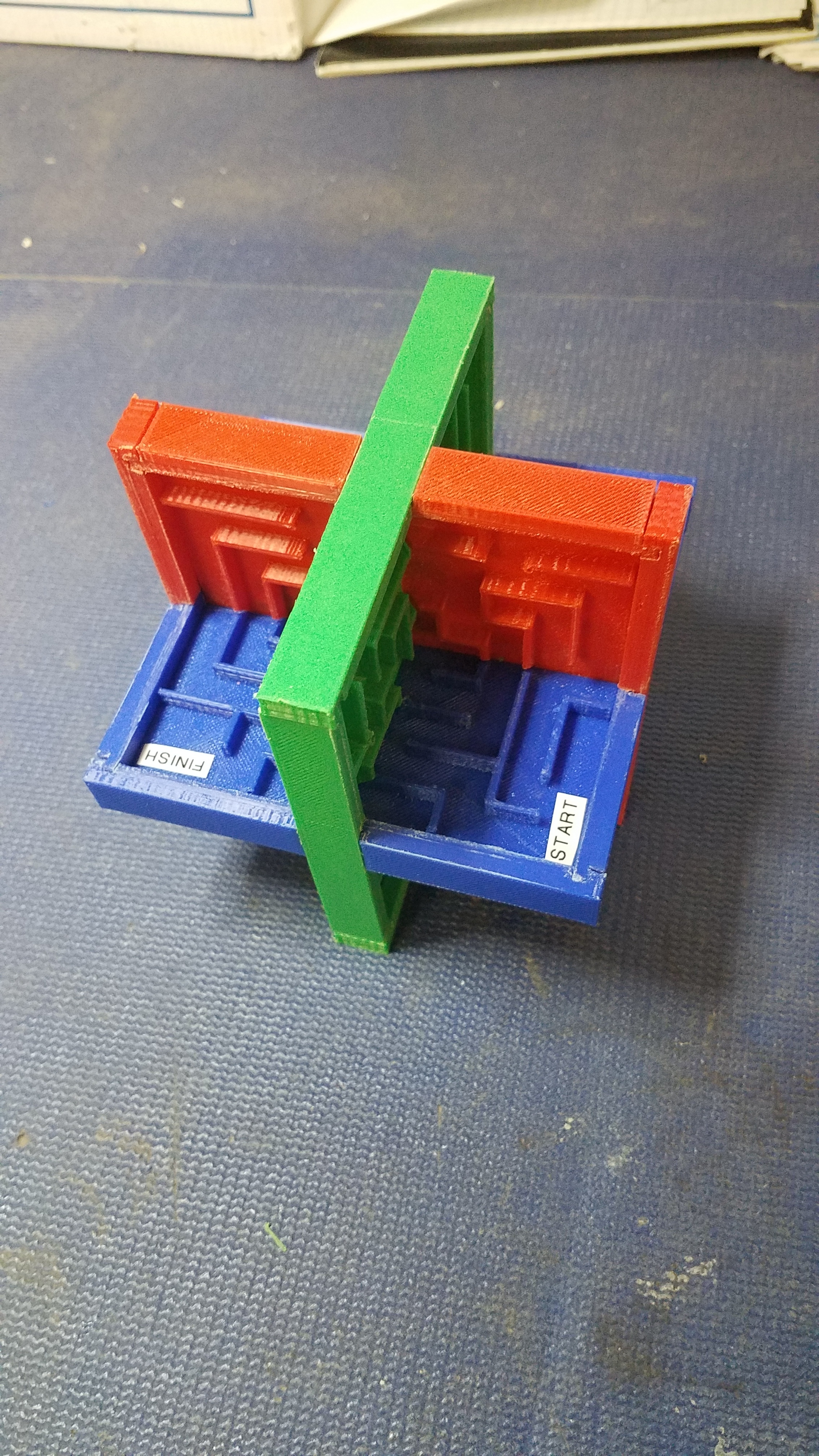
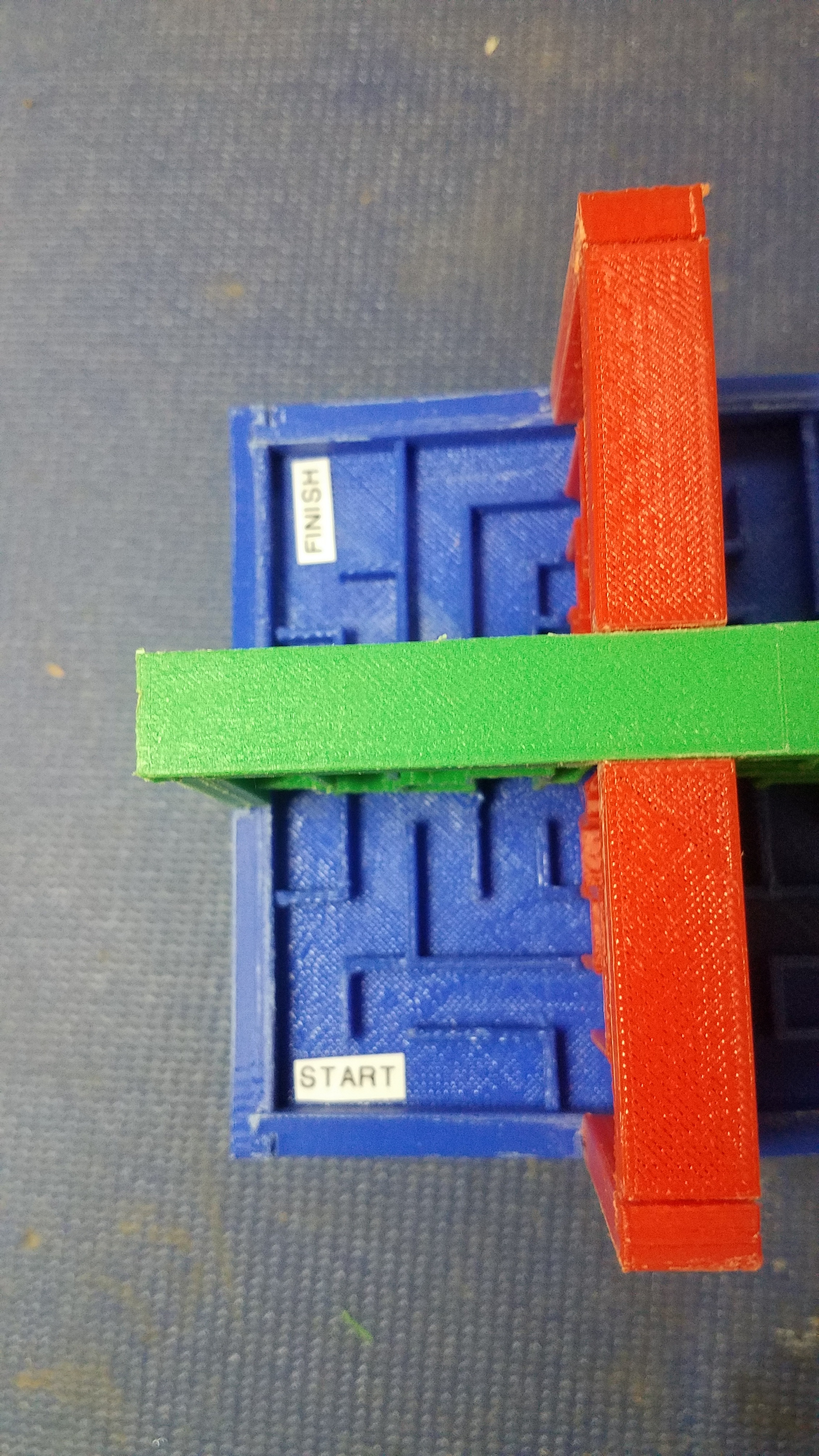
The finishing touch for this maze is to mark the "Start" and "Finish" locations. I used a small label maker to do this and just stuck the labels to the floor of the Blue maze piece as shown.
All that is required now is a small ball - a 1/8" ball bearing or something similar - and to enjoy the challenge of seeing if you can guide the ball from Start to Finish. Enjoy!
I do want to thank Asray Gopa again for his inspiration on this 3D Maze. It made for quite a challenge to create the design and to adjust the pieces so that they would fit together properly. I have no doubt that it took me MUCH LONGER to create this maze using a 3D printer than what Asray did with cardboard. But now anyone can take the files and make one too!